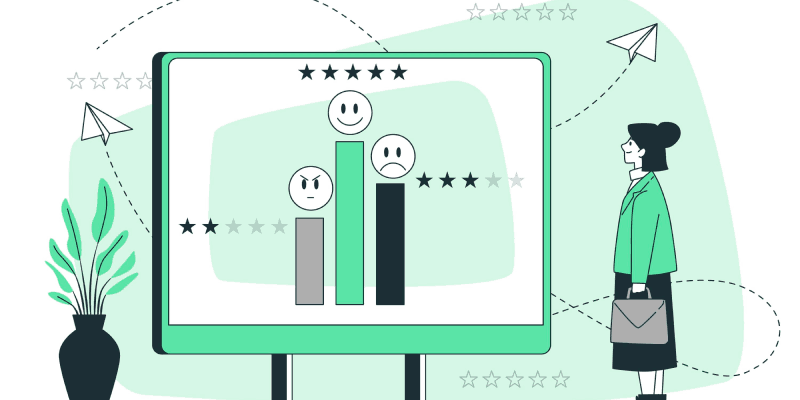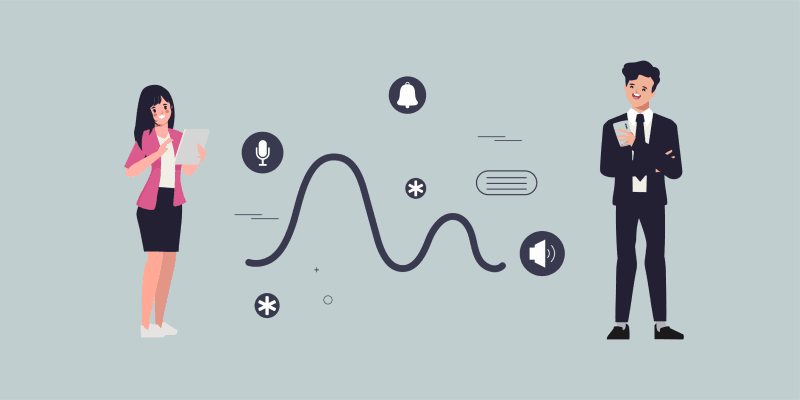What is Customer Churn Analysis and How to Perform It?

Churn is, unfortunately, an inevitable part of any business, no matter its size, reputation, or customer retention efforts. Some businesses are faced with higher and some with lower churn rates, yet what matters most is determining the primary cause of churn to be able to take effective measures to prevent it. This is precisely where customer churn analysis can help you.
In the following article, we will cover all you need to know about churn, its analysis, metrics, and more, so feel free to stay with us and get some first-hand information that can help you predict and prevent bothersome churn.
What Is Customer Churn Analysis?
Customer churn analytics or analysis, involves analyzing and understanding why customers churn or stop using a given product or service.
The primary goal of churn data analysis is to help you identify effective ways to reduce churn and increase customer retention rates. By understanding comprehensive churn data, you have an opportunity to create and implement potent retention strategies.
What Is a Churned Customer?
Churned customers or churned users, are customers who have ended their relationships with a company and stopped using their services or products. In SaaS, a churned customer is a person who cancels their subscription and stops using the software.
Churn assessment is particularly important as it shows the patterns and trends that lead to churn.
Before we talk more about customer churn metrics and churn rate analysis, let’s cover some of the most common customer churns (here is a list of the top 10 customer reasons for churning).
Canceling a subscription
Existing customers may cancel their subscriptions for various reasons, but two main reasons include poor customer experience and cost. If customers constantly experience issues with the software or customer service and support, they will most likely seek alternatives.
If the cost is too high and doesn’t match the derived product’s value, the churn is inevitable. The same rule applies to lack of use and changed needs that the current product can’t meet.
When you analyze churn due to subscription cancelation, you can identify the customer behavior and trends that led to it and take concrete steps to prevent it in the future.
Going to the competitor
This is one of the most common reasons for churn. Whether the competitor offers better prices for more features and functionalities or the customer has experienced a poor customer experience and wishes to be treated better at some other place, the point is that the utterly satisfied customer whose needs are met will not leave you.
To reduce the churn rate due to existing or new customers switching to competitors, it is essential to understand the reasons behind their decisions. Enters the customer churn analytics, that can help you devise effective measures based on the findings.
Closing an account
If the customer no longer needs the service or product or is taking cost-cutting measures, they might simply close the account. Also, the same could happen if they are not satisfied with the software’s performance, functionalities, features, or customer support.
In order to reduce churn due to account closure, you should focus on improving the overall customer experience and addressing the issues that may lead to it. In the end, you can offer incentives for customers to stay or options for pausing or downgrading.
Customer Churn Metrics: Which Ones to Keep an Eye On?
To understand and manage churn properly, there are a few customer churn metrics that you should keep an eye on:
- Churn Rate
- The churn rate shows the exact percentage of customers who decided to leave your company within the given period of time.
- Customer Retention Rate
- The retention rate is the opposite of the churn rate and it shows the percentage of existing customers you managed to retain over a certain period of time.
- Net Churn Rate
- This rate includes both customers who have churned and those who have purchased additional services or upgraded.
- Customer Lifetime Value
- The customer lifetime value or CLV, shows the total revenue you expect to get from a customer over the entire duration of your relationship with them. Thanks to this valuable metric, you can better understand the value a certain customer brings and determine how much you can spend on customer retention and acquisition.
- Average Revenue Per User
- ARPU shows the average amount of revenue you get from each user over a certain period of time.
Why Is It Important to Analyze the Customer Churn Rate?
Customer attrition analysis or churn analysis is important for several reasons. Firstly and most importantly, it helps you recognize trends and patterns in customer behavior that lead to churn. Once you are able to fully grasp why customers leave, only then you can identify areas for improvement and take steps to work on the weak spots.
By understanding what drives customers to churn, you can take proactive steps to improve customer retention. Whether there is an issue with the product, customer support, service, or pricing, you can easily address the ongoing issues once you get to the root of them.
If you manage to reduce churn rates, you are directly increasing customer lifetime value (CLV), which means you are getting more revenue from customers who stay longer with you. By implementing various customer success strategies that aim to create strong, long-term bonds with customers, you can make some progress.
Marketing and sales efforts are often way more expensive than needed, and this is where churn analysis proves its value. When you perform customer segmentation and understand which segments are more likely to churn based on their behavior and interactions, you can create customized marketing and sales strategies to target these specific segments and meet their unique needs.
With customer success platforms like Akita, you can perform customer segmentation within minutes, track key metrics related to customer health, manage customer accounts, share data with the entire team, and get comprehensive data that allows you to evaluate your customer success efforts.
How to Do Customer Churn Analysis?
Churn analysis is a process that includes several steps to help you understand why customers churn and which strategies you can include to prevent them from doing so in the future.
Figure out the customer churn rate
First, you need to determine the exact customer churn rate. The churn rate is calculated when you divide the number of customers you lost during a given period by the number of customers you had at the start of the given period. The result is then multiplied by 100 to get the percentage.
Now, let’s see a simple example. If you had 100 customers at the beginning of the month and lost 10 during the same month (10/100×100), your churn rate would be 10%.
Find out who the churned customers are
Once you identify the customers who have churned during a certain period, make sure to take some time to analyze their demographics, usage patterns, and other key information.
Analyze their behavior and feedback
Customer data can provide valuable insights into the reasons for churn.
First, you need to collect data, as we mentioned. Then, you should segment customers into groups based on different criteria like demographics, usage patterns, behavior, feedback, etc. The idea is to recognize the patterns among the churned customers. Lastly, compare the data from retained and churned customers to identify the key differences in usage, interaction, and other. Make sure to solicit feedback from the churned customers and ask them to share openly why they stopped using your product.
There should be a common theme within the feedback data that highlights the core reasons for churn, like lack of support, poor usability, or pricing concerns. Finally, develop an action plan that will address the identified issues with the goal of reducing churn.
Determine the reasons for churning
In the end, this is the main aim of churn analysis, so make sure to react proactively once you find out the prime reasons for churning. Gather the right team, including the proper customer success tools like Akita that can automate multiple processes, and evaluate the effectiveness of implemented strategies as frequently as possible.
Conclusion
Churn is an integral part of any business. Still, to beat it and reduce its rate, you must take some time to learn what hides behind it. This is where customer churn analysis can help you.
To understand what is churn analysis, you must first understand what customer churn is, which metrics you should take into account when performing churn analysis, and which customer success tools to use to segment customers to get to know them to the core.
Frequently Asked Questions
How do you measure customer churn?
You can measure the customer churn rate by using the customer churn formula: churn rate = nr. of customers you lost during the given period/nr. of customers you had at the start of the given period x 100.
What is a good customer churn rate?
In the SaaS industry, a good customer churn rate should be below 5% annually. Still, it can vary depending on the business model, target market, and stage of the business’ growth.
What is a KPI for churn analysis?
A key KPI for churn analysis is the churn rate! By tracking it regularly, you can identify trends and take proactive measures to prevent it!








